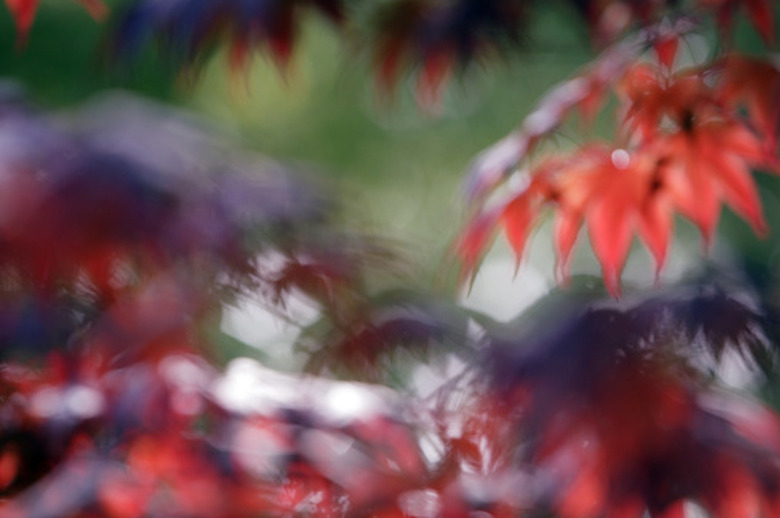The Growth Rate Of A Bloodgood Japanese Maple
The Bloodgood Japanese maple grows into a rounded shape with a globose canopy and multiple trunks leading to the renowned foliage of the tree. It grows best in U.S. Department of Agriculture plant hardiness zones 5B through 8.
Overall Growth
The University of Florida Cooperative Extension Service reports that the growth rate of a Bloodgood Japanese maple tree is considered to be slow, typically achieving an overall height of 12 to 20 feet and a spread of 15 to 20 feet. The leaves often remain red for most of a summer.
Considerations
The growth rate of a Bloodgood Japanese maple is often affected by its environment. "Due to poor growth in poorly drained soil, it is often planted on raised beds or on high ground in clay soil," according to University of Florida extension. Diseases and damage from pests may also slow the growth of the tree.
- The Bloodgood Japanese maple grows into a rounded shape with a globose canopy and multiple trunks leading to the renowned foliage of the tree.
- The University of Florida Cooperative Extension Service reports that the growth rate of a Bloodgood Japanese maple tree is considered to be slow, typically achieving an overall height of 12 to 20 feet and a spread of 15 to 20 feet.
Annual Growth
Like all Japanese maples, the annual growth rate is relatively slow, often less than 1 foot per year, or approximately 10 to 15 feet in the first 15 years of life. The majority of the growth occurs early in the lifespan of the tree, according to Clemson University Cooperative Extension.
Caring For A Japanese Bloodgood Maple
Prized for its showy foliage and growth habit, 'Bloodgood' Japanese maple (Acer palmatum 'Bloodgood' and Acer palmatum variation atropurpureum 'Bloodgood') is a common sight in U.S. Department of Agriculture plant hardiness zones 5 through 8, where the tree is hardy. Despite its delicate appearance, it is a resilient tree that typically suffers few problems. It encourages healthy root production, maintains the appearance of the foliage and protects the tree from heat-related stress. Large quantities of water can lead to problems, however. Apply the fertilizer to moist soil at a rate of 1 to 2 pounds in the area from the tips of the branches to within 1 foot of the trunk. Carefully read and follow the product label for details concerning application techniques, frequency and amounts. A 3-inch-deep layer of organic mulch spread on the surface of the soil under the tree's canopy will help conserve soil moisture and decrease the need for watering during summer, but the mulch must be stripped and replaced every year. Apply fertilizer to your 'Bloodgood' Japanese maple's soil after stripping and before replacing your mulch. Keep the mulch a few inches away from the trunk of the tree. ' Root rot and Verticillium wilt are two diseases that can strike if the tree is grown in wet, cold soil.
- Like all Japanese maples, the annual growth rate is relatively slow, often less than 1 foot per year, or approximately 10 to 15 feet in the first 15 years of life.
- A 3-inch-deep layer of organic mulch spread on the surface of the soil under the tree's canopy will help conserve soil moisture and decrease the need for watering during summer, but the mulch must be stripped and replaced every year.
References
- Clemson University Cooperative Extension: Maples
- California Polytechnic State University, Urban Forest Ecosystems Institute: "Bloodgood" Japanese Maple
- Monrovia: "Bloodgood" Japanese Maple, Acer Palmatum Var. Atropurpureum "Bloodgood"
- University of California Cooperative Extension, Tulare and Kings Counties: Japanese Maple Trees
- University of Illinois Extension: Red Japanese Maples
- This Old House: May Is for Mulching
